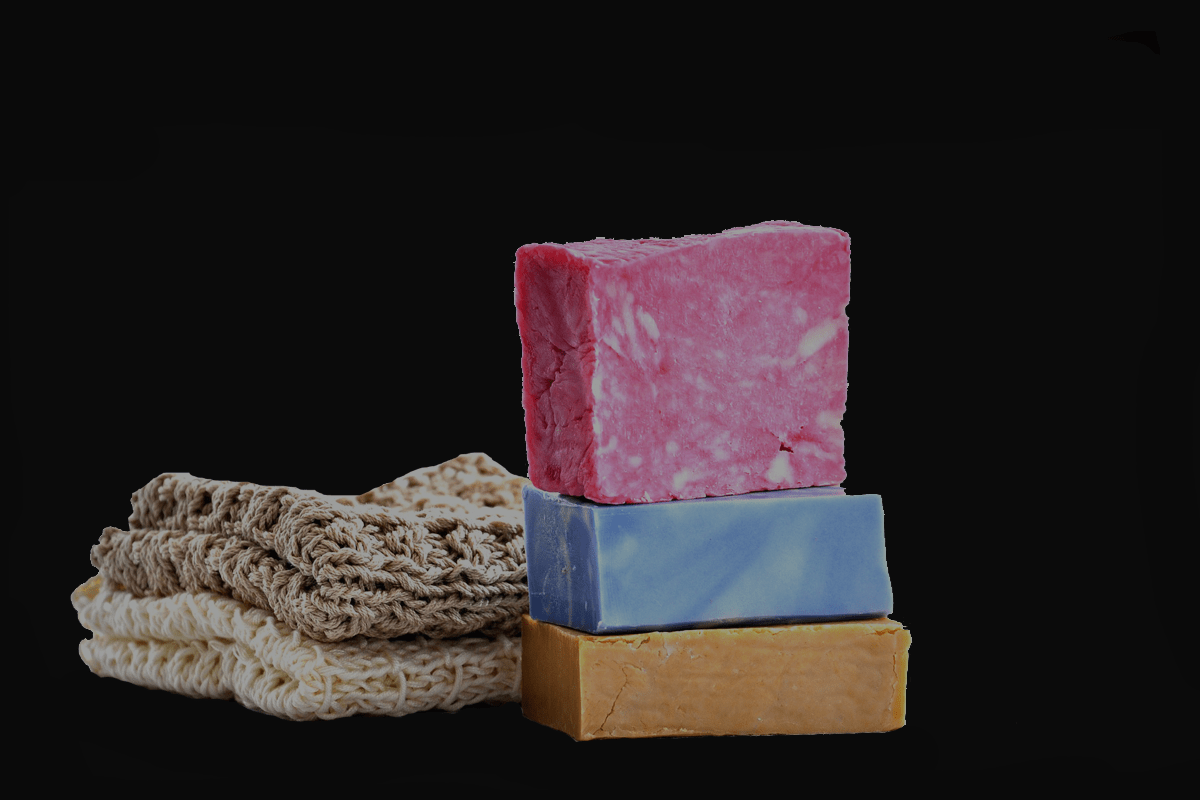
Procedure
- Heat the fat. Put the fats in a lye-resistant container and place a glass or stainless steel thermometer into the fats. Be sure the thermometer doesn’t touch the bottom of the container and give a false reading. Heat the fats and optional ingredients to the temperature specified in the recipe.
- Put on eye protection and rubber gloves.
- Use a heat-proof container to measure the amount of cold water (70 to 75 degrees F) specified in the recipe. Cold water is important. If you add lye to hot or boiling water, the water could “boil-up” out of the container. If you add lye to ‘really’ cold water, the lye/water might not reach the high temperatures required to make some recipes.
- Stir the water and slowly add the lye. The water will get hot and turn cloudy. Continue to stir until the lye dissolves. Don’t breathe or intentionally smell the fumes coming from the cup because they are quite ‘chokey’. If you wait too long to stir the water, the lye could harden in the bottom of the container. This is not a problem. You can still sitr it, but it will be more difficult. Add a glass or stainless steel thermometer to the lye/water and wait until it reaches the temperature specified in the recipe.
- When both the fat and the lye/water reach the temperature specified in the recipe, add the lye/water to the fat. It’s sometimes a balancing act to get the fat mixture and the lye/water mixture to specific temperatures at the same time. Never place lye/water in a microwave (the cup could break). It takes lye/water longer to cool than it takes fat to heat. Most soap makers wait for the lye/water to cool to about five degrees above the desired temperature, then heat the fat. When both the lye/water and the fat are within five degrees of the temperatures specified in the recipe. Use a pot holder and move the bowl to a sink (to contain splatters). Slowly pour the lye/water into the fats while stirring. Temperatures for small one-pound batches of soap poured into individual molds aren’t critical. As long as the lye/water and fats are between 120 and 140 degrees F you will have good success. Larger batches or batches poured into a single mold, require lower temperatures.
- Stir the soap until it ‘traces‘. When lye, water and fat first combine, the mixture is thin and watery. Gradually, as the lye and fat react chemically to form soap, the mixture thickens and turns opaque.
- After the soap traces, add up to one tablespoon essential oil (if desired) and stir a few minutes longer to incorporate the oil. About the only soap that remains totally scent-free is the Pure Soap Recipe that follows. Other fats result in soap that has a ‘fatty lye’ smell. Essentials oils are necessary for a pleasant-smelling product.
- Pour the soap into molds and wait for it to harden. The recipes states this length of time as ‘time in mold.’
- Unmold the soap. Soap is still harsh when it’s time to remove it from the molds. Put on rubber gloves and press the back of each mold compartment to release the soap. It’s a lot like removing ice cubes from a tray. Sometimes the soap doesn’t release easily from the mold. To overcome this problem, leave the soap in a freezer for a few hours. Freezing soap causes it to contract slightly, become hard and release from the plastic mold.
- Wait the time specified in a recipe for the soap to”age” (usually 3 weeks). During the aging time the pH of the soap decreased (the soap becomes mild) and the bars harden. It’s a good idea to write the following information on a piece of paper and place it with the soap: the date you made the soap, the date the aging time is over, and recipe.
- Step 10 is ‘enjoy your soap!’

